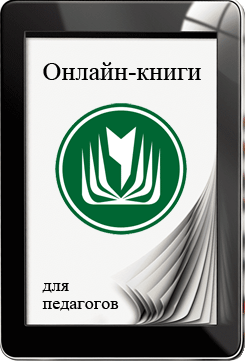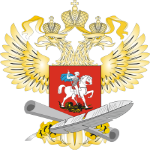At the Zoo
 Муниципальное бюджетное
образовательное учреждение
Муниципальное бюджетное
образовательное учреждение
«Средняя общеобразовательная школа № 40»
Петропавловска – Камчатского городского округа
Конспект открытого урока
“At the zoo”
Учитель английского языка
Матюхова Наталья Александровна
г. Петропавловск-Камчатский.
2015г.
Тема урока: At the zoo.
Продолжительность: 45 минут.
Предмет: английский язык
Класс: 5
Цели урока:
Обучающая:
-
формировать лексические навыки по темам «Названия животных» и «Части тела»;
-
формировать навыки чтения, аудирования и письма;
-
научить строить предложения в Present Simple (отрицательные и вопросительные) и использовать данные формы в речи;
Развивающая:
-
развивать навыки и умения во всех видах речевой деятельности;
-
развивать внимание и познавательную деятельность;
Воспитательная:
-
воспитывать любовь к животным;
-
воспитывать уважительное отношение к природе;
Задачи урока:
-
отработать лексику по теме «Части тела животных» в связной речи при описании животных (развивать умения монологической речи;
-
повторить и обобщить формообразование и употребление глаголов в Present Simple (отрицательная и вопросительная формы);
-
развивать умения аудирования с извлечением нужной информации;
-
развивать умения вести диалог-расспрос по ситуации «В зоопарке»;
-
развивать умения письменной речи (описывать животное с опорой на образец) ;
-
повторить и активизировать ранее изученные и освоить новые лексические единицы по темам «Названия животных», «Части тела животных».
Оснащение урока:
- учебник Spotlight 5(Student’s book);
- доска;
- компьютер;
- CD к учебнику;
- картинки с изображением животных;
- раздаточный материал с заданием по грамматике;
- презентация в Power Point;
Учебно-методический комплекс: УМК «Английский в фокусе » для 5 класса общеобразовательных учреждений. Ваулина Ю.Е., Дули Дж., Подоляко О.Е., Эванс В. – М.: ExpressPublishing: Просвещение, 2013.
Литература:
1. Ваулина Ю.Е.., Дули Дж., Подоляко О.Е., Эванс В. « Английский в фокусе» для 5 класса Учебник для общеобразовательных учреждений.– М.: ExpressPublishing: Просвещение, 2013.
2. Ваулина Ю.Е.., Дули Дж., Подоляко О.Е., Эванс В. «Английский в фокусе ». Книга для учителя.– М.: ExpressPublishing: Просвещение, 2012.
3. Ваулина Ю.Е.., Дули Дж., Подоляко О.Е., Эванс В. «Английский в фокусе » для 5 класса. Рабочая тетрадь.– М.: ExpressPublishing: Просвещение, 2013
Ход урока
Организационный момент.
Good morning boys and girls! I am glad to see you. I hope everybody is ready to work. Sit down, please. Let’s start our lesson.
What date is it today?
What day of the week is it today?
What’s the weather like today?
What season is it now?
How are you? (спрашивают друг друга по цепочке).
Fine! So let’s start our lesson.
Фонетическая зарядка
Let’s start our lesson with a little poem about the Zoo
Слайд №1 (Текст стихотворения)
Tomorrow on Sunday we go to the Zoo.
Tomorrow, tomorrow we go to the Zoo.
There is a giraffe there and a zebra too,
A bear and a monkey, and a kangaroo.
(T, P1-P2, P1-P2-P3…)
Речевая зарядка
Do you like to go to the Zoo?
Do you like animals?
What animals can you see in the Zoo? (Ps - Lions, Elephants, Foxes, Bears, Tigers …)
Постановка целей
Can you tell me what are we going to speak about?
( P1 -About animals. P2 – About Zoo.)
Right you are.
Today we are going to learn new words and do the tasks with new words, learn describe any animals, read, write and play.
Основная часть урока
-
Повторение изученной лексики и введение новой лексики по теме «Названия животных».
Today at the Zoo you can see many different animals.
Listen to the sounds. Which of the animals in the picture can you hear?
Слайд №2 (Учитель с помощью ИКТ представляет детям возможность услышать голос животных. После прослушивания дети называют животных по – английски, после чего появляется изображение на экране.)
(P1- the monkey, P2- the lion, P3- the peacock, P4- the elephant, P5- the bear)
-
Повторение изученной лексики и введение новой лексики по теме
«Части тела животных».
Слайд № 3
Повторение прилагательных с противоположным значением.
Say the opposite.
long – short, big – small, thin – thick.
Слайд № 4 (Новая лексика представлена на слайдах более простым и удобным способом для запоминания, используя названия частей тела человека.)
Nose-beak, hear – fur, toes-paws…
Ex. 2 p. 68
Now use new words and adjectives to ask about the animals in the pictures.
Предполагаемый ответ:
P1: Which animal has got a thick mane?
P2: The lion. Which animal has got long legs?
P3: The giraffe. Which animal has got a small beak?
P4: The peacock. Which animal has got big paws?
P5: The bear. Which animal has got big ears?
P6: The elephant. Which animal has got a short tail?
P7: The bear. Etc.
-
Развитие умений монологической речи при описании животных и отработка лексики по теме «Части тела животных» в связной речи.
Describe any of the animals. Make two false statements. And your partner corrects you.
Слайд № 5
example: The elephant has got big ears, long legs and a short trunk. The elephant hasn’t got big ears, long legs and a short trunk.
It hasn’t got short legs and a long trunk.
Предполагаемый ответ:
P1: A peacock has got a long beak and short feathers. A peacock hasn’t got a long beak and short feathers. It hasn’t got a short beak and long feathers.
P2: A giraffe has got a short neck, short legs and a long tail. The giraffe hasn’t got a short neck and short legs. It has got a long neck and long legs.
4. Динамическая пауза
- Let’s have a rest.
Imagine that we are in the forest where а kind bear and his friend Masha live. And you see a lot of fruit and vegetables there. You and a bear decided to pick up fruit and vegetables for holiday dinner. So if it grows on trees you must raise your hands up and collect it and if it grows on the ground, you must bend to the earth and collect it.
Учитель изображает на доске дерево и либо прикладывает картинки, либо называет разные фрукты и овощи. Если это растёт на деревьях, ученики должны потянуться вверх и сорвать плоды, а если это растёт на земле, то ученики наклоняются вниз.
-
Развитие умений поискового чтения.
Ex.4 p.68
Now let’s name the animals we can see at the zoo.
(Ps – elephant, crocodile, tiger, monkey and so on)
Read the first two lines of the dialogue. And say where are Ann and Ben?
That’s right. They are at the zoo.
Now think of some animals you can see at the zoo.
(Ps: an elephant, a crocodile, a tiger, a monkey and so on)
Now read the dialogue to yourself and say which animals are in the dialogue.
(Ps : a giraffe, monkey, a bear)
That’s right. Now let’s read the dialogue aloud, please.
5.Развитие умений изучающего чтения.
Now look through the text again and find the words in the dialogue for underlined
pronouns.
-
It has got a long neck. – a giraffe
-
They are noisy.- monkeys
-
I find them cute. – Ben
-
Повторение и обобщение формообразования и употребление глаголов в Present Simple (отрицательная и вопросительная формы)
Слайд № 6
Now let’s revise negative and interrogative forms of the Present Simple Tense. Read the table.
|
Negative I (you, we, they) don’t like lions. He (she, it) doesn’t like lions Interrogative Do I ( you ,we, they) like lions? Does (he, she, it) like lions? Short answers Yes, I (you, we, they) do. No, I (you, we, they) don’t. Yes, he (she, it) does. No, he (she, it) doesn’t. |
What do we use to form these forms?
(Ps: вспомогательные глаголы do/does)
That’s right. And now find examples in the dialogue, please.
P1: Do you like Zoo?
P2: What does it look like?
P3: I don’t like monkeys.
P4: Yes, I do.
6.Отработка употребления вопросительной формы Present Simple: общие вопросы и краткие ответы – ex.7 р. 69
Next task for you is to fill in do, does, don’t or doesn’t.
-
1. Do, do. 2. Does, doesn’t 3. Do, don’t. 4. Does, does.
And now I’d like you to work in pairs. Ask and answer each other questions.
-
2. Does. 3. Does. 4. Do. 5. Do. 6. Do. 7. Does.
Предполагаемый ответ:
2. No, she doesn’t. 3. No, he doesn’t. 4. No, I don’t. 5. Yes, I do. 6. Yes, I do. 7. Yes, he does.
(Дополнительные задания предлагаются нескольким ученикам.)
Card № 1
Fill in do, does, don’t or doesn’t.
-
_ the monkey live in England?
No, it _ _.
-
_ the zebra live in Africa?
Yes, it _.
-
_ the dolphins live in the ocean?
Yes, they _.
-
_ you like snakes?
No, I _ _.
-
_ the rhino like to sit in the mud?
Yes, it _.
Card № 2
Fill in do, does, don’t or doesn’t.
-
_ the lion live in the house?
No, it _ _.
-
Do you like to go to the zoo?
Yes, I _.
-
_ the whales live in the river?
No, they _ _.
-
Do the elephants live in India?
Yes, they _.
-
_ the cheetah run very fast?
Yes, it _.
7.Динамическая пауза
Let’s have a rest. Stand up, please.
Stand up! Clap! Clap!
Butterfly, butterfly.
Arms up! Clap! Clap!
Butterfly, butterfly.
Step! Step! Arms down!
Where do you fly?
Clap! Clap! Please, sit down!
So quickly and high,
In the blue, blue sky?
8.Развитие умений аудирования с выборочным пониманием заданной информации.
Now I’d like you to listen to the text “ Visit to London Zoo” . Listen to the text and complete the advertisement.
9.Развитие умений вести диалог-расспрос по ситуации «В зоопарке».
Now imagine you are at a zoo. Act out the dialogue like in ex.4 p.68
These phrases can help you to complete the dialogue.
It’s great.
Which one?
What does it look like?
Why not?
I find them… (funny, clever, strong,…)
10.Развитие умений описывать животное с опорой на образец.
Look at the blackboard. Let’s revise the names of the animals and describe features of the animals. Write about your favourite animal. Use the plan.Don’t name the animal, don’t draw it. Let your partner guess the name.
-
Animal.
-
Colour.
-
Features.
-
Where it lives.
P1: It’s a wild animal. (tiger).It is orange. It’s handsome and fast. It hunts small animals. It has got strong legs. It lives in Russia.
P2: It’s a wild animal. (lion). It’s brown. It’s big and clever. It can jump. It has got beautiful mane. It lives in Africa.
P3: It’s a wild animal. (crocodile). It’s green. It’s long and dangerous. It can swim. It has got big teeth. It lives in South America.
P4: It’s a wild animal. (monkey).It’s brown. It’s funny and naughty. It likes bananas. It climbs the trees very well. It has got small eyes. It lives in North and South America.
P5: It’s a wild animal.(elephant). It is grey. It is very big and strong. It has got very big ears.
11.Инструктаж по выполнению домашнего задания.
At home you should write down about any wild animal you like, don’t forget to draw or to find a picture of the animal (Ex 10 p. 69). W. B p.42. Learn words by heart.
12. Подведение уроков. Оценивание. Рефлексия.
I think your work today was very good.
Will you tell me what new thing you have learnt?
What did you like and why?
What didn’t you like and why?
- Вебинар «Игры-эксперименты с дошкольниками: воспитываем потребность в познавательном общении со взрослыми, стремление наблюдать, сравнивать, исследовать, устанавливать причинно-следственные связи (ФОП ДО)»
- Вебинар «Краеведческая работа библиотек как средство интеграции в социокультурное пространство региона: традиционные формы, новые технологии»
- Международный вебинар «Лицевая гимнастика: комплексы упражнений, подготовка и методика проведения»
- Международный вебинар «Цифровые образовательные ресурсы, дистанционные образовательные технологии, электронное обучение в работе с обучающимися с нарушениями зрения»
- Международный вебинар «Приоритетные ориентиры в системе “государство – отдых – ребёнок”, принципиальные подходы к сфере отдыха и оздоровления детей, современные формы, методы и технологии организации отдыха и оздоровления детей»
- Международный вебинар «Создание безопасной образовательной среды в образовательной организации в рамках реализации федерального проекта “Цифровая образовательная среда”»






